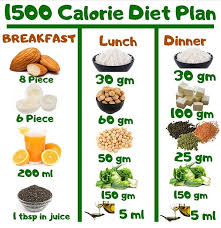
It can be difficult to introduce meat to your diet after you have been a vegetarian or vegan. You not only need animal products for Vitamin D or K, but meat also contains vitamin Vitamin A12, which is important for your bone health. Additionally, animal products are the only source of iron and protein. Reintroducing meat to your diet for the first time can cause digestive issues. Avoid heavy meals and opt for simple meals.
Side effects when you eat meat again, even if you are a vegetarian or vegan.
Reintroducing meat to your diet can have side effects if you're a vegetarian/vegan. The first thing that you may experience is a change in your digestive system. Most vegetarians experience no side effects. However you might experience nausea and bloating when you introduce meat. Lightheadedness, abdominal pain, and lightheadedness are some other symptoms. Some people may also experience indigestion. Avoiding meat intake while pregnant or nursing is not recommended.
Also, food poisoning can occur when meat is introduced to the body. It may be severe and last several days. Some people have sensitive stomachs and might develop digestive issues. In such cases, they may suffer from headaches and nausea. You should keep track of any symptoms that you have so that you can be tested if you have food sensitivities. This can help prevent unpleasant side effects from happening and could also help to avoid health problems.

Vitamin D is important for bone health. Vitamin K is also necessary.
It's clear that meats and dairy products contain high amounts calcium and/or phosphorus. This is vital for bone strength. The body will suffer from weak and brittle bones if it does not have enough of these nutrients. Vitamin D deficiency may also cause autoimmune diseases and increase risk of infection. People with vitamin D deficiencies may experience higher levels of depression. So, the next time you eat meat, remember to get plenty of calcium.
Calcium is an essential mineral. It plays an important role in bone growth, muscle function, heart health, and other aspects of our bodies. Despite its importance, vegans are likely to have low levels of this mineral. Supplements of calcium can be taken in the form pills or powder. But it's crucial to make sure that you are getting enough. Vitamin D is an essential component of mood regulation and immune system function. Vitamin D also aids in the absorption and maintenance of other nutrients.
Vitamin B12 can only be found in animal products
Although vitamin B12 is not naturally found in animal products you can still get it from plant-based foods. Fortified food sources include nutritional yeast, soy milk, and some breads. Make sure to check the label before you buy any food product containing vitamin B12. It is also recommended to get a B12 blood test every year, regardless of whether you're a vegan or a vegetarian.
People used to get vitamin B12 from bacteria found in plant foods. However, modern hygienic practices have reduced the amount of bacteria found in fruits and vegetables. This has resulted a reduction in stomach acid which makes vitamin B12 more difficult to absorb.

Skin changes after eating meat
Many people with acne notice a change to their skin after eating meat. These people are more likely to experience breakouts than other skin conditions. This is due to the fact that meat has choline. Choline can increase Trimethylamine Oxide (TMAO), a hormonal that causes chronic inflammation. It is important to remember that the body will not respond well if you eat meat. So if you notice changes in your skin after eating meat, be patient and try not to rush into changing your diet too quickly.
Rashes are the most obvious sign of food allergy. Inflammation causes blood vessels to dilate, and this leads to a rash on the skin. Eczema, hives, and other skin conditions that are often associated with meat protein sensitivities include eczema and hives. Hives, which are red, fluid-filled bumps that appear on the skin's surface, are a sign of sensitive skin. Both types of rashes are uncomfortable and can even lead to respiratory problems.
FAQ
How does an antibiotic work?
Antibiotics kill harmful bacteria. Antibiotics are used to treat bacterial infections. There are many options for antibiotics. Some can either be administered orally, while others may be injected. Other antibiotics can also be applied topically.
Antibiotics are often prescribed to people who have been exposed to certain germs. For example, if someone has had chicken pox, he or she might take an oral antibiotic to prevent shingles later on. Penicillin might also be administered to someone with strep throat. This will help prevent the possibility of developing pneumonia.
Doctors should prescribe antibiotics to children. Children are more susceptible to side effects from antibiotics than adults.
Diarrhea, the most common side-effect of antibiotics, is probably diarrhea. Other side effects that could occur include nausea, vomiting and dizziness. These side effects typically disappear once treatment is complete.
Does cold make you weaker?
According to some, there are two kinds: people who love winter and people who hate it. It doesn't really matter whether you love winter or you hate it. You might wonder why you feel so bad when it's cold.
Our bodies were designed to work best in warm climates. We evolved to thrive in hot environments because of the abundance of food resources.
We live in a very different environment than our ancestors. We spend a lot more time indoors, and are more likely to be exposed to extreme temperatures like heat and cold.
Because of this, our bodies have become accustomed to extremes. When we venture out, our bodies are unable to handle the extremes. This leaves us feeling exhausted, sluggish, or even sick.
These effects can be reversed, however. Staying hydrated is one way to combat this. Hydration is key to keeping your body well hydrated, flushing out toxins and maintaining a healthy weight.
You must also ensure that you are eating healthy foods. The best way to maintain your body's optimal temperature is by eating nutritious food. This is especially helpful for people who spend a lot of time indoors.
Finally, consider taking a few minutes each morning to meditate. Meditation can help you relax your mind, body and soul. This makes it easier to manage stress and illnesses.
What is the difference between a virus and a bacterium?
A virus is an organism microscopic that can't reproduce outside its host cells. A bacterium is a single-celled organism that reproduces by splitting itself in two. Viruses are small, around 20 nanometers in size. Bacteria are much larger, at 1 micron.
Viruses can be spread by contact with bodily fluids containing infected substances, such as saliva, urine and semen. Bacteria is usually spread directly from surfaces or objects contaminated with bacteria.
Viruses can get into our bodies through cuts and scrapes on the skin, bites or other injuries. They can also get into the skin through the nose, mouth and eyes, ears as well as through the rectum, rectum and anus.
Bacteria can enter our bodies through wounds, cuts, scrapes, burns, insect stings, or other breaks in our skin. They may also enter our bodies from food, water, soil, dust, and animals.
Both bacteria and viruses can cause illness. Viruses can not multiply in the host. They can only infect living cells and cause illness.
Bacteria can multiply within their hosts and cause illness. They can invade other areas of the body. They can even invade other parts of the body, which is why antibiotics are necessary to eradicate them.
Statistics
- According to the Physical Activity Guidelines for Americans, we should strive for at least 150 minutes of moderate intensity activity each week (54Trusted Source Smoking, harmful use of drugs, and alcohol abuse can all seriously negatively affect your health. (healthline.com)
- This article received 11 testimonials and 86% of readers who voted found it helpful, earning it our reader-approved status. (wikihow.com)
- In both adults and children, the intake of free sugars should be reduced to less than 10% of total energy intake. (who.int)
- WHO recommends reducing saturated fats to less than 10% of total energy intake; reducing trans-fats to less than 1% of total energy intake; and replacing both saturated fats and trans-fats to unsaturated fats. (who.int)
External Links
How To
What does the term "vitamins" mean?
Vitamins are organic substances found naturally in food. Vitamins help us absorb nutrients from foods we eat. Vitamins cannot be produced by the body. They must be obtained from food.
There are two types if vitamins: water soluble, and fat soluble. Water-soluble vitamins dissolve easily when they are dissolved in water. Examples include vitamin C,B1 (thiamine), B2 (riboflavin), B3 (niacin), B6 (pyridoxine), folic acid, biotin, pantothenic acid, and choline. Fat-soluble vitamins are stored within the liver and in fatty tissue. Examples include vitamin D, E, K, A, and beta carotene.
Vitamins are classified based on their biological activity. There are eight main types of vitamins:
-
A - Vital for healthy growth.
-
C - essential for proper nerve function, and energy production.
-
D - Essential for healthy teeth and bones.
-
E is required for good vision and reproduction.
-
K - Essential for healthy muscles and nerves.
-
P - Vital for strong bones and teeth.
-
Q – aids digestion and absorption.
-
R - necessary for making red blood cells.
The recommended daily allowance (RDA), for vitamins, varies based on gender, age, and physical condition. RDA values are set by the U.S. Food and Drug Administration (FDA).
For adults aged 19 and older, the RDA for vitamin B is 400 micrograms daily. Because it is essential for the development of the fetus, pregnant women should consume 600 micrograms per days. Children ages 1-8 require 900 micrograms per day. Babies under one-year old need 700 micrograms per daily. Between 9 and 12 month, however, this drops to 500 mg per day.
Children ages 1-18years who are obese need 800 micrograms per day while those who are overweight need 1000 micrograms per day and children who are underweight need 1200 micrograms per day to meet their nutritional needs.
Children aged 4-8 years old who have been diagnosed as having anemia require 2200 micrograms of vitamin C per day.
Adults over 50 years of age need 2000 micrograms per day for general health. Due to their increased nutrient needs, pregnant and breastfeeding women need 3000 micrograms daily.
1500 micrograms are required daily by adults over 70 because they lose approximately 10% of their muscle each decade.
Women who are pregnant, nursing or breastfeeding need more than the RDA. Pregnant woman need 4000 micrograms daily in pregnancy and 2500 per day after childbirth. Breastfeeding mothers need to consume 5000 micrograms each day when breastmilk has been produced.